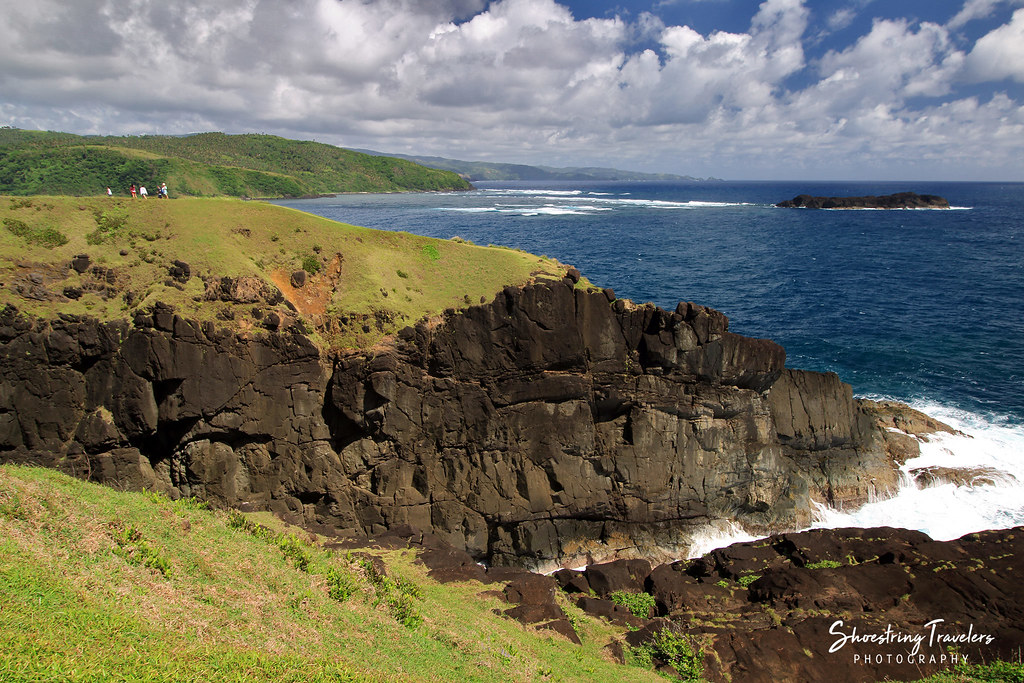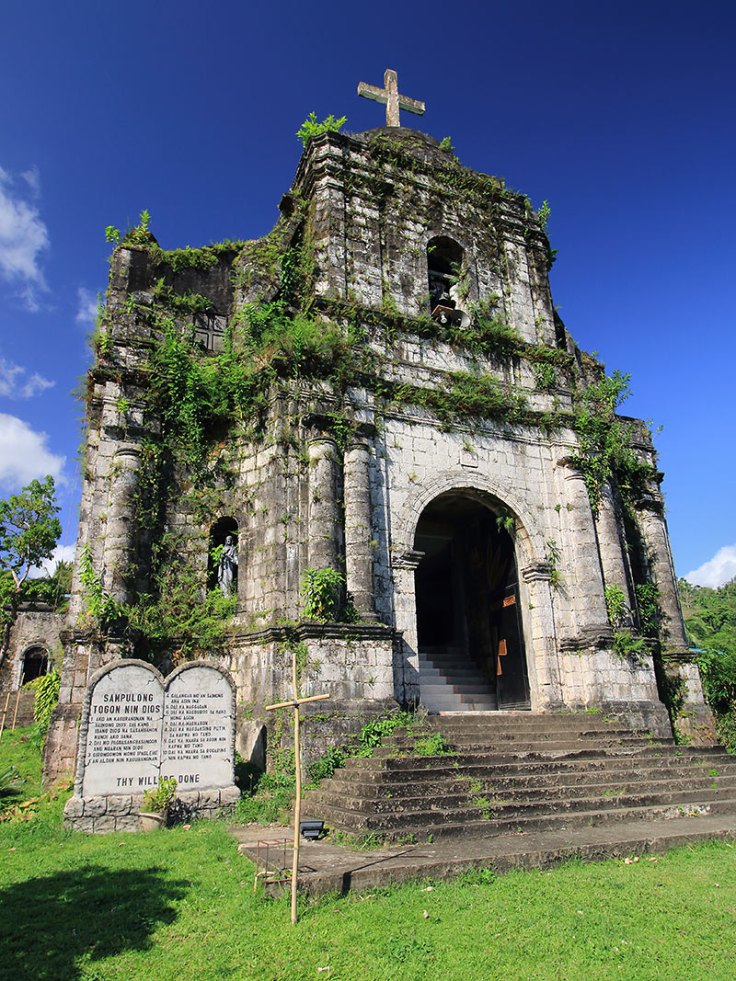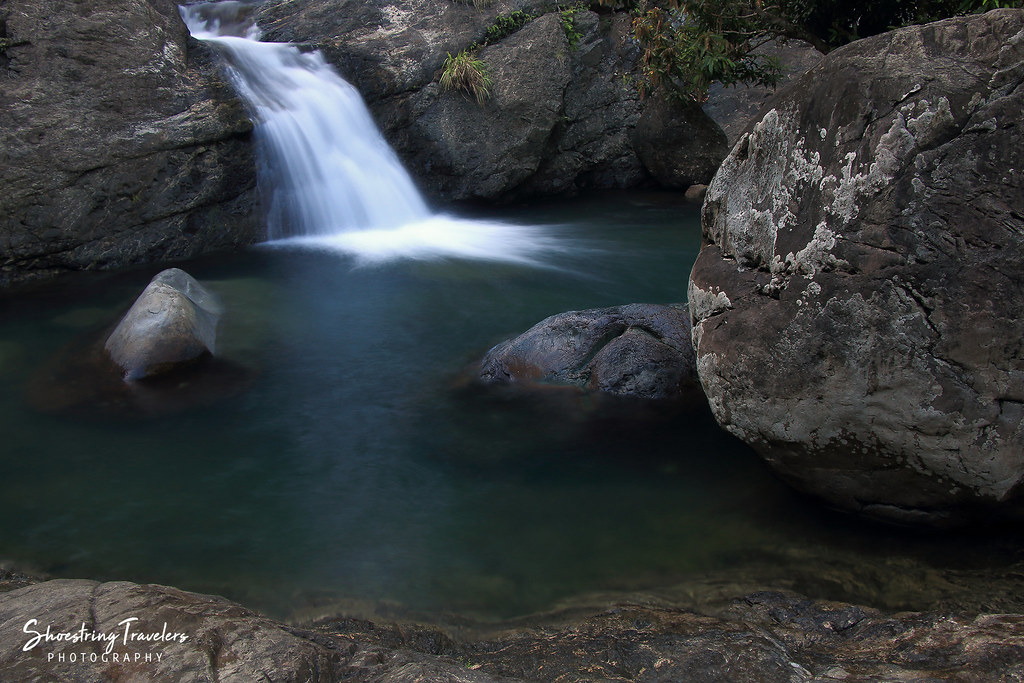We almost never got to see the attractions of Bato town in Catanduanes. Our original itinerary included the Cagnipa Rolling Hills and the beaches of Pandan town and possibly nearby Palumbanes Islands in Caramoran – attractions on the western coast. That proved to be too ambitious given our limited time and we ended up restricting ourselves to Virac and the eastern destinations. That brought us to the town of Bato.

Bato (pronounced with emphasis on the first syllable) is the town right after Virac with the town center lying right along the scenic national road from Virac to Baras. And so after our time at Binurong Point and Puraran Beach in Baras we got to drop by Bato and visit two of its attractions on our way back to Virac.
Bato’s Heritage Church

Our first destination in Bato was the St. John the Baptist Church, an edifice constructed with coral stones. It is situated astride the main highway to Virac at the northern section of Bato town proper and right along the banks of the Bato River. The highway bridge across the beautiful green river is easily visible from this church.

Often simply referred to as Bato Church, the St. John the Baptist Church is the oldest church building in Catanduanes. The original structure, made of wood, was first built in the 1500s. Wooden structures are not so resistant to destructive typhoon winds, however. And since typhoons visit Catanduanes often, giving it the moniker “Land of Howling Winds,” the locals eventually replaced the wooden structure with masonry. Construction of the existing structure was started in 1830 and finished after more than 50 years.
Maribina Falls
Lying closer to Virac, the Maribina Falls is situated less than a kilometer from the man highway to Virac (it actually lies a few hundred meters from the boundary of Virac and Bato towns). This makes it the most accessible waterfall in the province. The road going to the falls is also marked with a prominent signage that we easily spotted while on our way to Baras in the morning.

The slightly uphill road going to the falls is concreted so our trike didn’t have any problems driving there. It’s also possible to just walk the distance to the falls from the highway – an easy 15-minute hike. There is a P20 entrance fee.

Maribina is a three-tiered waterfall with the top falls being the highest and largest. The next two falls are much shorter. The deep green catch basin at the top tier is also the deepest. Steps have been carved into the surrounding rock to make it easy to access each tier but there is a sign forbidding visitors from climbing higher than the last tier. While the falls are not as striking as many of the falls we’ve encountered in recent years it was a welcome variety to the scenic coastal views we’ve experienced the past two days.

Even though we had visited Maribina Falls on a Monday, there were quite a number of visitors swimming and diving at the falls, most of them young adults. Apparently, the schools here have concluded their final exams the Friday before and the students were taking the time to let off steam. And what better way to do that than at a waterfall destination with cold spring water from the mountains.
Getting There
We paired the trip to Bato with our visit to Binurong Point and Puraran Beach in Baras from our resort in Virac. We rented a trike for the Baras trip so it was easy to just ask the driver to make a stop at Bato Church then take the road to Maribina Falls. We feel the best itinerary for this trip is to go to Binurong Point (in the morning when it’s not too hot), then Puraran and lastly to Bato Church and Maribina Falls on the drive back to Virac.

Some people prefer to take the jeepney from Virac to Baras first then rent a trike in Baras to go to Binurong Point and Puraran Beach. Going back you can take the jeepney at Baras for the drive back to Virac, ask to be dropped off at Bato and take a trike from there to the church and Maribina Falls, and possibly drive you back all the way to Virac (the drive from Maribina to Virac is not that far). Jeepneys are not common even along the main highway. They will also fill up with passengers at their terminals before making the trip making you wait for a long time.
Other Attractions
Maribina Falls is just the surface of the natural beauty that Bato has to offer. The Bote lighthouse up on a hill gives a beautiful panoramic view of the Pacific and Sakahon Beach. The road leading to the jump-off point to the lighthouse is still unpaved and you will need to negotiate a steep trail in 30-45 minutes. But once you reach the top the views are awesome.
Even less known than Bote is Cagraray or Patag Islet with its crystal-clear natural pools and stunning rock formations. An extraordinary and less-visited attraction (it just started getting featured last year) is the 7 islands of Carorian Wonders with its huge white rock formations, turquoise lagoons and seaside falls. Both Cagraray and the Carorian Wonders are accessible via boat rides. With attractions like these a return visit to Catanduanes should be in the pipeline. We probably need to stay for a month in this province to visit all its natural attractions.












Did also had a tricycle tour here in Bato?
We simply passed by Bato town – which is how we got to see the church and the waterfall – but it’s possible to do a tour of the town and its natural wonders we mentioned in this post.